A Busy 2015!
It was a busy start to the year taking part on a research expedition to the Chagos MPA in the British Indian Ocean Territory (BIOT), currently the second largest enforced no-take marine reserve in the world and home to a local population of reef manta rays (Manta alfredi). The expedition, led by the Zoological Society of London (ZSL) and funded by the Bertarelli Foundation, consisted of researchers from all around the world. I was fortunate enough to join this expedition representing The Manta Trust and as part of my PhD at Linnaeus University Sweden, to work on The Manta Trust Chagos Mobulid Ray Project, run in partnership with ZSL.
The trip was an incredible success and in addition to deploying SPOT tags to help obtain information on manta ray critical habitats, population connectivity and distances migrated, we also obtained some incredibly useful tissue samples that have been sent to the Save Our Seas Foundation funded project based at the Molecular Ecology and Fisheries Genetic Laboratory (MEFGL) in Bangor University, who are working to create a genetic ID kit to analyze collected samples down to species level and region of origin (SOSF – mobulid genetics), which will complement the ID guide book I am working on (SOSF – global mobulid ID guide).
After the expedition in Chagos, I was back in Sri Lanka and got the chance to visit the fisheries again. Always a reality check and helps remind me how important this work is! Change is slow, often too slow, and even though Sri Lanka is signatory to CMS, national legislations are yet to be introduced or implemented to reflect the manta and mobula listings under both Appendix I & II. Increasing pressure to protect these species, along with studies highlighting the economic incentives of maintaining these animals alive vs. dead is however proving effective on a global scale and we are working to help replicate these efforts in several countries, including Sri Lanka.
A few weeks later I had the opportunity to visit the Mote Marine Laboratory in Florida where Kim Hull and Bob Hueter run a research group, supported by funding from the Save Our Seas Foundation, to study eagle rays. However it has not just been eagle rays frequenting their waters and lately there have been regular sightings of Mobula hypostoma, one of the pygmy species of devil rays found along the West Atlantic coastline. As part of collecting data for the global mobulid ID guide and for the genetic ID kit, I was of course extremely interested to get some first-hand experience with these animals.
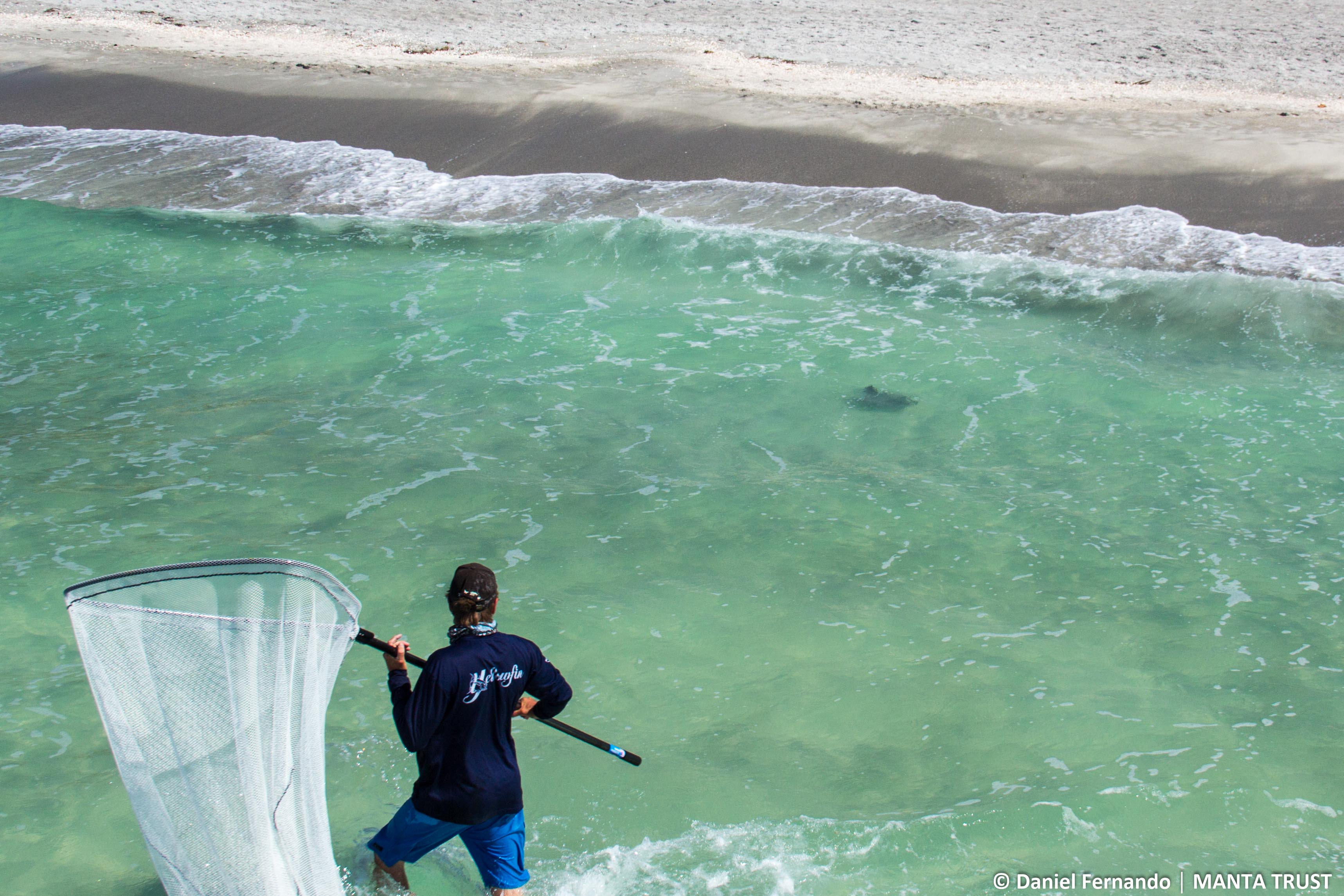
© Daniel Fernando – a researcher attempting to capture a mobula swimming just a few feet off the beach
It was quite a unique experience as we were able to encounter mobula rays just a few feet off the beach in extremely shallow waters. These rays, unbothered by the presence of humans, appeared to be feeding in the shallow surf break. Researchers at the Mote Marine Laboratory are studying these devil rays in order to explain their presence in this region and to learn as much about them as possible since these animals are so under-studied, they are currently listed as Data Deficient under the IUCN RedList!
We hope that projects such as this at the Mote Marine Laboratory, along with the global mobulid ID guide funded by the Save Our Seas Foundation, will help inspire new research into other poorly studied devil ray species to help present a more accurate global picture of their status and likely vulnerability.
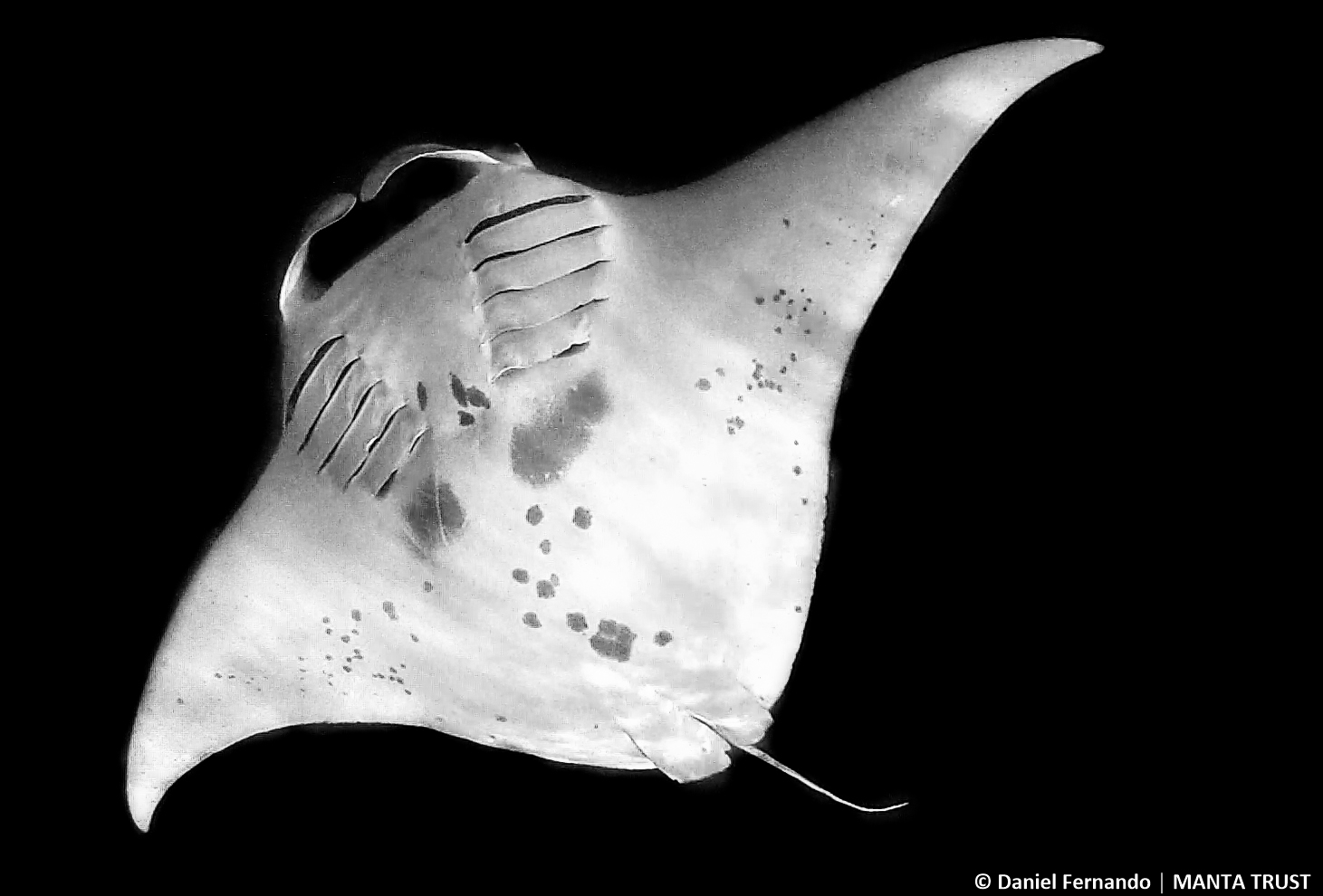
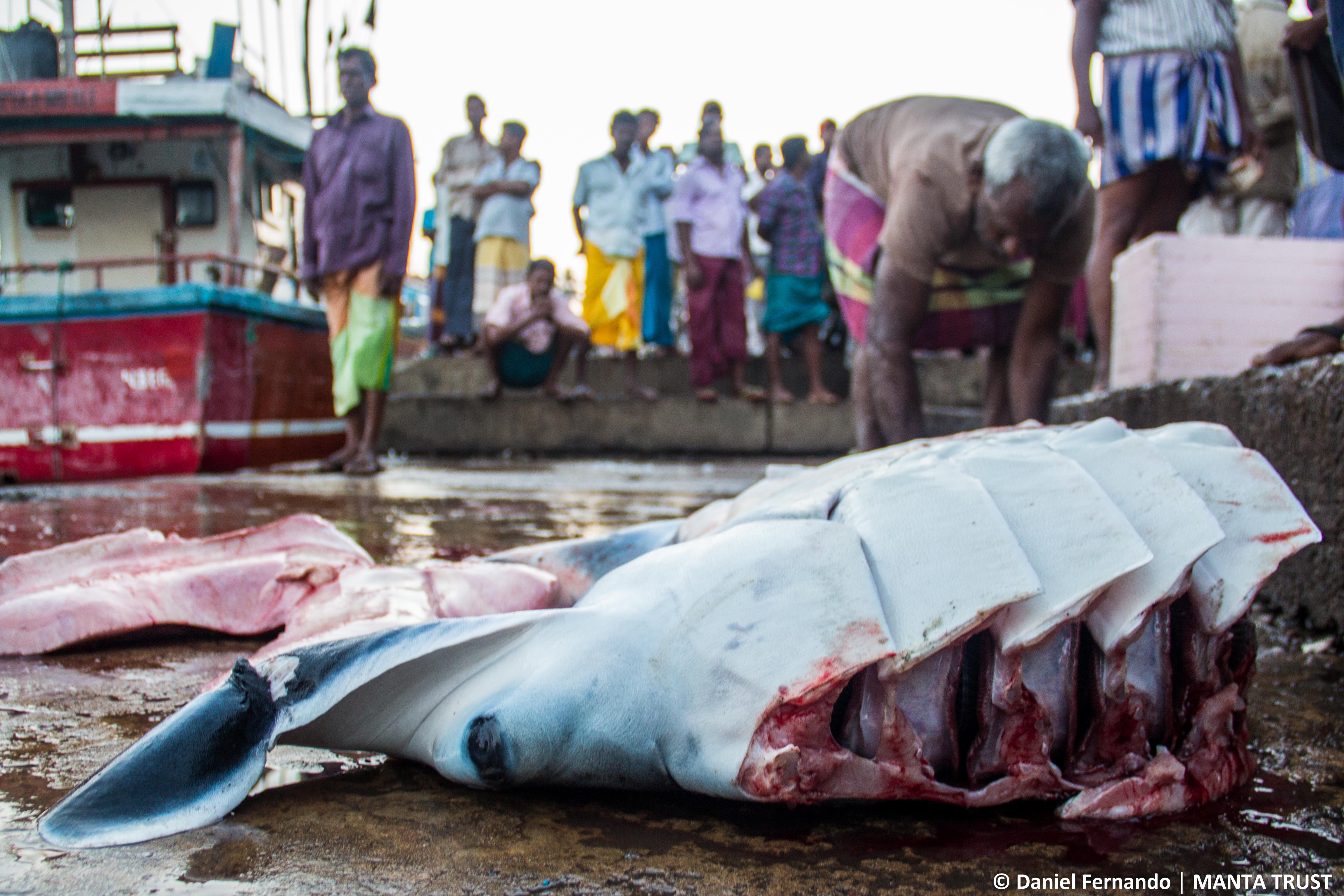
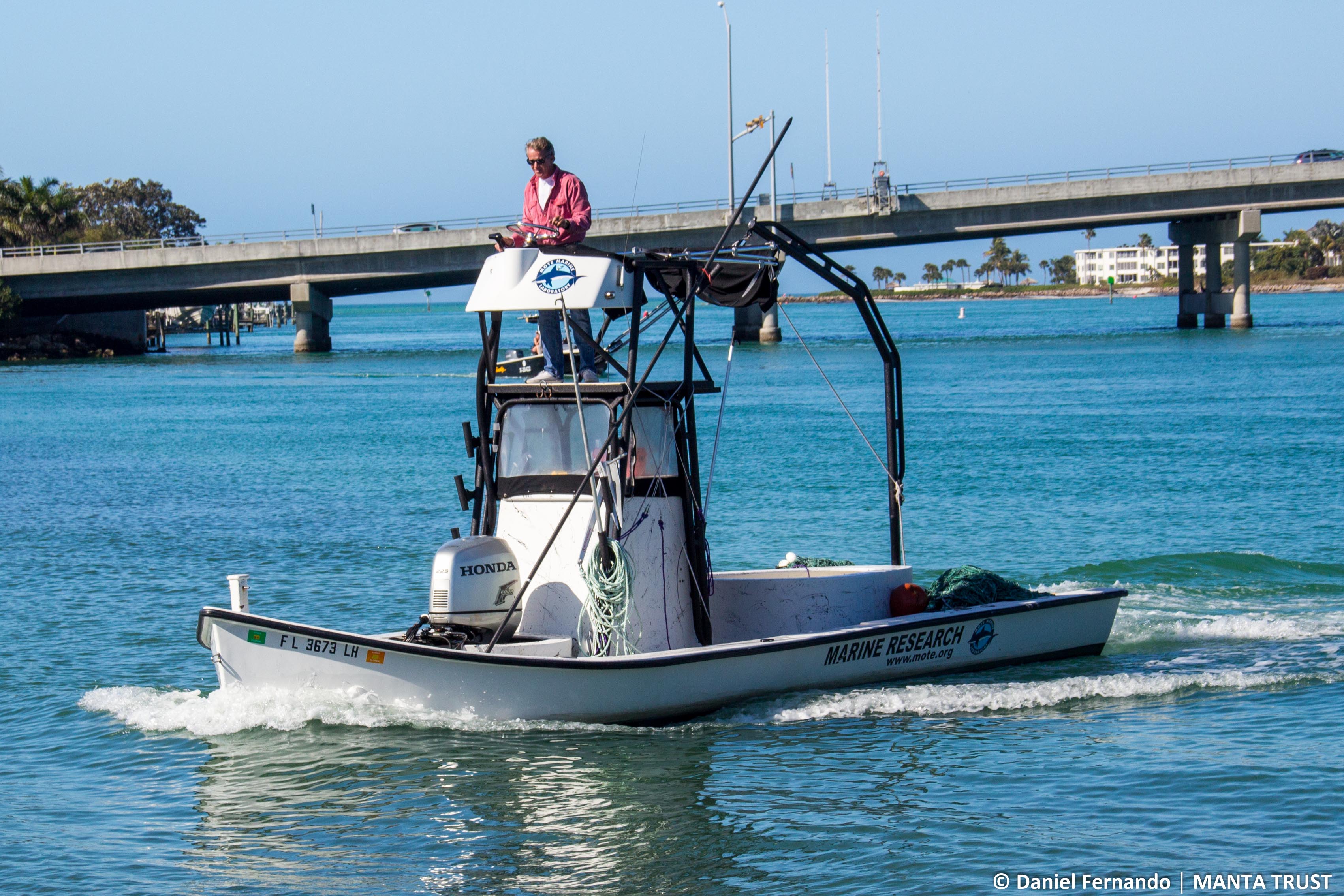
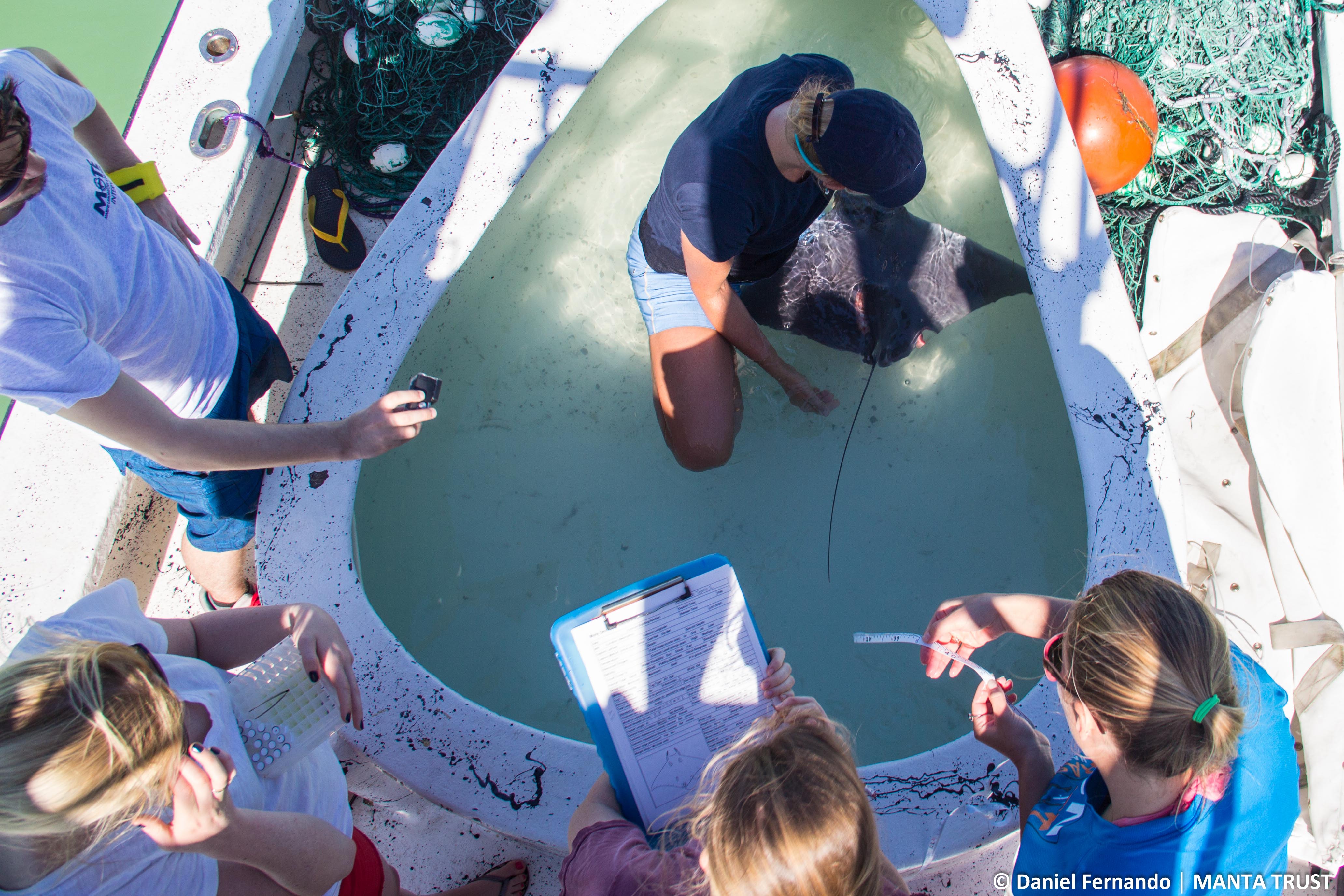

Leave a Reply
You must be logged in to post a comment.